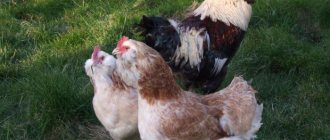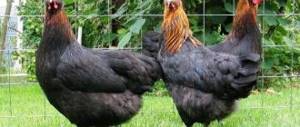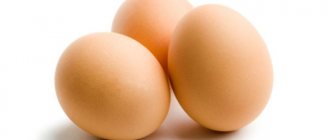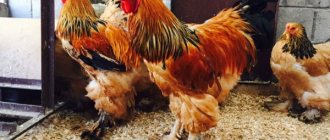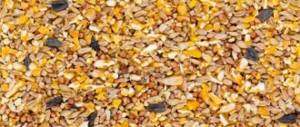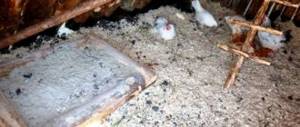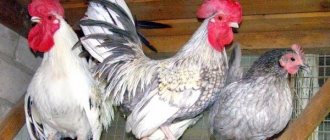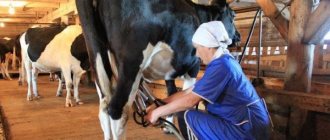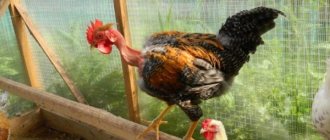The Loman chicken breed was born back in 1970 thanks to the efforts of the German company Loman Tirtsucht. Breeders set themselves the task of developing a very productive hybrid that could outdo all existing laying hens on the planet. At that time, Leghorns were considered the most productive breed. They were crossed with other breeds to obtain this hybrid.
At the moment, Lomans are presented in two subspecies: Brown (brown) and White (also often called White) - white. It is the white variety of this cross that we will talk about today.
In the publication you will find a detailed description of the cross, see photos of white beauties, as well as reviews from farmers who were lucky enough to have this hybrid in their backyard.
Breed characteristics
The average weight of adult representatives of Loman White reaches 2.2 kg. The chickens of this cross are quite small, very rarely gaining more than 1.7 kg. The main value of this hybrid is its high egg production. It is worth mentioning that White’s productivity is stable and can only decline during the molting period, but this is a characteristic feature of each breed of laying hen.
The first thing that catches your eye when meeting this poultry is its very white plumage. This is the merit of one of the progenitors - the Leghorn breed. The feathers fit very tightly to the body, without creating an air “cushion”. It is worth noting that the feathers are very hard.
The tail is located at a right angle, both in a cockerel and in a hen. But the hen, naturally, has a slightly shorter tail. The wings are relatively small, proportional in length to the body. The body itself is trapezoidal, like most other laying hens. Cockerels have pronounced breasts, while hens have a clearly visible large belly.
The bird's legs are elongated and bright yellow. On the head there is a bright red comb, with the same bright red earrings. Males have a more developed comb than females. Usually the comb is erect, but there are White specimens in which it is skewed to one side.
Productive characteristics
As for the productivity of the breed, it is very high:
| Weight | Chicken - 1.5 kg, rooster - 2 kg |
| Puberty | By 4.5–5 months |
| Average annual egg production | 300–350 pcs. |
| Egg weight | 55–60 g |
In order for productivity to remain consistently high, chickens need the correct temperature regime (not lower than +18ºС). During the formation of the reproductive system, laying hens are provided with a large amount of calcium and vitamin complexes. Nutrition always has a significant impact on productivity.
Character of the cross
Loman White is one of the calmest crosses. Whites are rather melancholy individuals who very rarely enter into conflict. Roosters are not characterized by aggressive behavior, and they not only do not provoke conflicts, but also try to avoid provocations from other roosters, animals or people.
This hybrid can be safely kept with other breeds of chickens without fear that conflicts will arise between different families.
In this case, you need to take into account the fact that this is a fairly active bird and it will be very crowded in a small chicken coop, not to mention an ordinary cage. Therefore, in order for the Whites to feel good, they need to organize a large walking yard.
About the Lomanov breed
chicken representatives Loman White White have become famous due to their leading positions in egg production. Of particular value is the ability of chickens to lay eggs even in the cold season.
Loman hybrids are represented by two main breed branches: brown hens and white ones, while Loman White is not an independent line, but a cross from the brown Loman Brown classic.
Loman White chickens come from Germany, and got their name from a German company that bred new birds as a result of breeding work in the 70s of the last century.
German chickens are loved by poultry farmers in many countries not only because of their high productivity rates; therefore, many farmers breed them. In the process of keeping them, they have established themselves as birds with a calm, balanced character, not prone to aggressive behavior, and get along with other breeds of farm animals.
It should be noted that representatives of this class are quite curious and often noisy, but the presence of other positive characteristics allows them to ignore their noisiness. Placing at least 1 rooster per 15-20 females allows you to moderate the noisy temperament of hens.
Puberty and productivity
The productivity of this cross is considered one of the best among laying hens. White hens are capable of producing eggs every day, no matter what time of year it is.
Sexual maturity of chickens occurs at 4 months. It is during this period that crosses can lay their first clutch. Productivity increases with age.
Maximum egg production lasts no more than 80 weeks (560 days). On poultry farms this cross is not kept for longer than 560 days, but at home the birds are kept for 2-3 years.
As noted earlier, during molting a significant drop in productivity is possible. During this period, it is necessary to take care of the correct diet of the bird. It must be provided with the proper amount of calcium, protein and vitamins. This will allow you to recover faster and return to your previous productivity levels.
Content Features
Chickens are raised well both in cages and on free range. But in order to get the maximum benefit from laying hens, it is necessary to create optimal conditions for keeping them.
If laying hens live in cages, they should be quite spacious so that they can move around them without hindrance. And if the cross is planned to be grown in semi-free conditions, then care should be taken about nests and perches. These chickens are egg-laying, so there should be a lot of nests. It is necessary to keep the chicken coop clean to prevent and stop the development of harmful microorganisms that negatively affect the birds' bodies.
Chicken coop microclimate and regime
Cross-laying hens feel good in any rural conditions, but it is still recommended to provide them with microclimatic conditions that will contribute to maximum egg production
It is very important to create the right microclimate in the chicken coop. The optimal temperature should be 16-18 degrees, and the relative humidity should be 40-70%
Both dry and humid air can have a detrimental effect on the health of chickens.
If there is no additional heating in the chicken coop, then it should be insulated. In winter, the windows are covered with a special film, and hay and peat are laid on the floor. There should not be the slightest hint of drafts in the chicken coop. Lighting will help increase the productivity of laying hens.
For egg-laying chickens, the daily routine is also very important. Stages of the correct regime:
- Early in the morning (or when the lights are turned on), the chickens are taken out of the coop, but not fed.
- About 3 hours later they organize breakfast. Feeding should not last more than 40 minutes.
- After breakfast, the remaining food is thrown out of the feeders and cleaned. Thus, the appearance of bacteria is prevented.
- At three o'clock in the afternoon the chickens have lunch. There should be enough food for the hens to peck for about 1.5 hours.
- At 9 pm the birds are driven back into the coop and the lights in the cages are turned off.
The chicken coop must be ventilated every day so that the chickens do not suffer from respiratory diseases. In this case, the chicken coop is equipped with system ventilation. But ordinary windows with opening transoms are also suitable.
Feeding
The breed is considered special, but at the same time it is not picky in matters of feeding. Laying hens eat anything, but to get the maximum number of eggs you need to follow certain rules in creating a diet:
- Whole grains must be excluded from the diet; only small amounts of corn and wheat are allowed (they are given in the evening). They keep the bird full until the morning.
- Use special feed instead of whole grain. The feed contains the right nutrients.
- But birds need vitamins, minerals and fiber, so feed alone is not enough. To help laying hens lay eggs better, they are given special vitamin and mineral supplements.
- During the warm season, chickens actively peck fresh grass, but in cold weather they replace it with dried herbs.
- In the morning, you can give wet mash consisting of broths, cereals, herbs and vegetables.
- In winter, the daily ration is increased, since the herd needs a significant amount of calories to maintain warmth.
Raising chickens Loman Brown
Breeding Loman Brown and Loman LSL chickens at home is excluded. As mentioned above, this is an industrial cross with a difficult breeding structure. Most farmers and private poultry farmers buy hatching eggs or day-old chicks from German suppliers.
Although the cross has excellent vital signs, it is still recommended to raise future laying hens under certain conditions:
- Temperature. Chicks begin their life at a temperature of 35-36 degrees. Then it is gradually reduced (every two days) until the end of the first week. The chickens spend the second week at 28-29 degrees. Until the sixth week, the temperature is lowered by 2 degrees every seven days. Thus, chicks at the age of 42 days live at a temperature of 18-20 degrees.
- Light. The light regime in the first 2-3 days should be around the clock. Then they move on to intermittent lighting. During the day, the chicks receive four light cycles of 4 hours and 2 cycles of darkness. Chicks are transferred to the standard light cycle from the tenth day.
- Care. An important factor that contributes to the proper development of chicks is a good supply of oxygen and vaccination. In private farms with a good epidemic history, vaccination is not necessary, but with a significant number of livestock it is mandatory.
Advantages and disadvantages of this cross
This cross is still one of the most popular in the Russian Federation. This popularity is due to a number of advantages, among which it is worth mentioning:
- This is not a very voracious bird, making its maintenance rational.
- They ripen very quickly. They can lay eggs as early as 4 months of age.
- Young animals have high survival rates.
- Quite an easy-to-care poultry.
- Adapt well to different climatic conditions.
- They have high egg production rates. One laying hen can produce about 350 eggs per year.
- The eggs are very large, up to 70 grams.
Naturally, like any other poultry, Loman White has its drawbacks. Among the main ones:
- Suppressed maternal instinct. Like most crosses, chickens have one purpose - to lay eggs. And the likelihood that some laying hen will want to become a hen is practically reduced to zero.
- This hybrid has a fairly short period of maximum productivity.
Raising chickens
As we already mentioned, it will not be possible to get chickens from the previous flock. The fact is that these laying hens lack the brooding instinct. Therefore, chickens will need to be purchased or eggs raised in an incubator.
As for the number of feedings per day, up to 10-14 days of age babies are given food 6 times, up to 1.5 months of age - 5 times, up to 4 months - 4 times. At 1.5-2 months, the hens are separated from the roosters.
They do this because laying hens will need a special diet and a certain amount of feed. To gain weight, roosters will need to eat protein and carbohydrate-rich foods. At the same age, young chickens can be united under one roof with the rest of the livestock.
Video: proper nutrition and maintenance of chickens An important component of chicken maintenance is vaccination and preventive administration of antibiotics. Also, in order for the birds to have good health, young animals should be allowed out for walks more often.
Maintenance and care
Caring for poultry is not that difficult. It is enough just to follow a number of simple rules:
- The temperature in the chicken coop should be between +23-25 degrees Celsius. Chickens, of course, can tolerate lower temperatures, down to +5 degrees, but this will negatively affect their egg production.
- It is advisable to place a good layer of bedding on the floor of the chicken coop. The bedding can be peat, straw or hay. The approximate thickness of the litter is 15 cm.
- Ideal conditions for chickens are if the chicken coop has 1 m2 of space for 2 chickens. These are ideal conditions. Acceptable, which most farmers adhere to, is 4 chickens per 1 m2.
- The premises must be kept clean at all times. The litter is removed every 3 months, drinking bowls and feeders are cleaned as they become dirty. Disinfection must be carried out at least once every 6 months. Otherwise, a lot of fleas will settle in the chicken coop, which will bite not only the bird, but also the people who come for the eggs.
- If possible, it is necessary to install a hood that will protect the room from dampness and unpleasant odors.
- The ideal daylight hours for chickens is 13 hours. In winter, when the sun sets early, fluorescent lamps are used.
- It is best to place feeders and drinkers along the wall. This will protect them from tipping over. Also, it is advisable to install a net on the feeder, since birds very often rummage through the feed and scatter it throughout the room. The mesh will make it easy for chickens to get food, and at the same time protect it from the bird’s “bad” habits.
- The chicken coop should also have perches. They are placed at a height of 50-60 cm from the floor. An average of 40 cm per roost per hen is allocated.
Basics of breeding and keeping
Poultry farmers who want to breed Loman White do not need to have any special knowledge. It is enough to properly organize the chicken coop and provide the birds with quality food. Particular attention should be paid to feeding during molting. At this time, chickens need additional vitamins and minerals. It’s good if laying hens have their own veterinarian. He will advise the farmer which vitamin and mineral complex to purchase and in what proportion to add it to the feed.
You also need to provide the quons with a comfortable nesting space. If this point is ignored, they will lay eggs wherever they please. If the owner wants to increase the productivity of chickens, he can extend the daylight hours for the birds to 14 hours. To do this, you will need to equip the house with appropriate lighting, as well as monitor the daily routine.
Important! Chickens will do better if they have room to roam. Before purchasing Loman White, the farmer needs to think about whether he can provide German beauties with such luxury. Otherwise, there are no special rules.
Place for keeping
First of all, you need to take care of arranging the nests. The recommended quantity is one nest for five females. There should be a drinking bowl near everyone. Also, we must not forget about perches.
To ensure your chickens always remain healthy, you need to keep the house clean. It is necessary to regularly clean and disinfect and remove droppings. This applies equally to drinking bowls and food bowls. They also need to be treated for parasites and infections, washed and wiped dry.
The optimal temperature for keeping the breed is 11-15 degrees Celsius. In winter, it is advisable that the temperature does not fall below 5 degrees Celsius, otherwise there may be health complications. Despite the endurance of chickens, it is better to take care of them and not expose them to unnecessary risks.
Walking should be done regularly. Of course, chickens can get used to being kept in batteries, but then it is better to accustom them to such a routine from birth. Lohman White’s activity and curiosity should be encouraged, and therefore walks for them are a necessary condition for healthy physical and mental development. The only exception is the winter period. Frosts can damage birds' combs, so it is recommended not to let them outside from December to February.
Feeding
Feeding poultry is the most important process that has the greatest impact on its productivity. The number of eggs that a laying hen will produce depends on whether the Loman White diet is correctly formulated.
Feeding tips:
- In the first weeks of their life, chickens need to be fed with mixed feed, that is, a dry grain mixture. You should refrain from homemade recipes at this time.
- When the chicks are 21 days old, you can add fresh vegetables and fruits to the feeders.
- Also, if possible, you can start giving fresh grass.
- The approximate norm for adult laying hens is 120 grams per individual.
- During the molting period of birds, emphasis should be placed on vitamins and mineral supplements.
- From time to time it is necessary to give the chickens mash. It is prepared either with boiled water or using broth. Various cereals and vegetables (including potato peelings) are added to the mash. Also, it is imperative to add table salt and bone meal to the mash.
How to maintain?
Unpretentious in keeping, Loman Brown chickens nevertheless need a sufficient amount of high-quality feed and optimal temperature and light conditions so that productivity remains at the same level. In general, living conditions differ little from the average for any laying hens.
The room should be clean, well ventilated, but protected from drafts. Bedding should preferably be made from natural materials - hay, straw, sawdust. Optimum temperature +18°C, humidity – from 45 to 75%. When kept on the floor, no more than 3-4 individuals per 1 m2 are recommended; when kept in cages, more is permissible. It is imperative to organize comfortable closed nests with partitions. One nest for 5 laying hens.
In winter, birds need lighting to maintain good performance. There should be at least 16 hours of daylight. However, bright light, according to the observation of many farmers, contributes to conflicts between birds and increases their irritability. Dim diffused light will be optimal. Ideally, you need to ensure a dusk and dawn regime, since sudden switching on of bright lighting in the chicken coop causes stress in the bird.
The litter in private household plots is recommended to be deep and permanent. Only the top layer is changed; the lower 5-7 cm should be left for fermentation. This bedding creates an optimal microclimate, cools and absorbs dust in summer, and additional heat is released in winter due to fermentation processes.
Feeding
The feeding regimen is standard. In the morning feeding, it is advisable to give wet mash with boiled vegetables and high-quality feed. After lunch, they usually give a grain mixture of crushed grain containing corn, oats, barley, and wheat. Fresh greens must be included in the poultry's diet. In winter, hydroponically sprouted grains of wheat, barley, and oats show excellent results. For the winter, you can also prepare brooms from nettles and acacia. One chicken per day requires 120-140 g of feed in free-range conditions and 115 g in cage-fed conditions. In winter, birds need a little more food to maintain their body temperature.
Chick care
Eggs produced at peak production produce 98% of chicks. With good care, timely vaccinations and vitamin supplementation, the survival rate is 100%. Chicks are usually purchased at one day old. The temperature in the brooder for day-old chicks should be at least +30°C. Then, every week the temperature is lowered by 2-3 degrees, gradually bringing it to the standard temperature of +18°C. The room for chickens should have a flow of fresh air, but without drafts. The bedding must be changed daily and the dishes must be washed thoroughly.
Growing at home is not much different, except that the brooder is replaced by an ordinary cardboard box. It is better to illuminate and warm the chicks using infrared lamps; they do not have a harmful effect on the retina of the chicks’ eyes, and it can be safely left overnight to avoid hypothermia of the young.
For the first 3-4 days it is necessary to feed with natural food every 2 hours both day and night. Per 100 chickens you need:
- 10 eggs mixed with 500 g of corn grits, or 500 g of low-fat cottage cheese per 500 g of cereal;
- 10 multivitamin tablets (once a week);
- whey, chamomile decoction.
In the first days, chicks should be given a drink warmed up, since their body temperature is 41 degrees; cold water quickly overcools the chicks. During the first week, chickens need to be fed with preparations such as Enroxil or Baytril, according to the instructions, as well as those that contain the microelement selenium, which is important for the development of chickens.
From three days of age, finely chopped greens are added to the diet; wet mash based on meat or vegetable broths can be given. Starter feed is introduced. Wet mash should be eaten within 40 minutes and any leftovers should be discarded. At the age of 7 days, the chickens are given a container with washed and calcined river sand, and boiled and mashed eggshells are added to the diet. From 4 weeks of age, chickens are transferred to an adult regime and diet. Loman Brown hens begin to lay eggs at the age of 4.5-5.5 months.
Hatching chicks
You won't be able to create a cross on your own. Of course, you can pick up the clutch and place it in an incubator, but slightly different offspring will grow up, which will not show such high productivity. For many, this is a big minus, but most hybrids are like that.
Poultry farmers buy chickens mainly for only one season, after which they are replaced. Laying hens are more in demand among Loman White, since cockerels have virtually no value. By the way, you can distinguish a female from a male already at 2 days of age. On the second day after emergence, the hens are white, while the cockerels are fawn. All this is due to the fact that chickens develop much faster.
We also recommend reading: Description of the Shaver Brown chicken breed
Basic tips for raising young animals:
- The chickens are fed three times a day. Portions should be small so that children do not overeat. In the first days of the week it is compound feed, fruits, vegetables, grated boiled eggs. An antibiotic is also added to a bowl of water to strengthen the baby’s body.
- When the chickens are 15-20 days old, cottage cheese, yeast and grass can be added to the diet.
- Hens that are 4-4.5 months old are ready for full egg laying. Therefore, you need to include as much calcium and protein in their diet as possible.
History of the breed
Chickens of the Loman White breed were bred in the early 70s of the 20th century. Breeders from the German company Lohmann Tirtzucht took part in their breeding.
The most egg-laying and unpretentious breeds of chickens were selected for the experiment. They became the Rhode Island and Plymouth Rock breeds, and with them the white Leghorn rooster. They are the ancestors of modern Loman White crosses. The cross, bred by German poultry farmers, has received worldwide recognition.
Young animals and their survival rate
This is a fairly strong hybrid. The survival rate of chickens among Loman White reaches 95%. But at the same time, one must also take into account the fact that the health of the bird directly depends on the farmer and his attitude. From how he feeds, in what conditions he is kept, etc.
When the young animals are 1.5 months old, they can be moved into the chicken coop with adult laying hens. It is worth noting that despite early puberty, the physical development of chickens is somewhat delayed, and they acquire the appearance of a full-fledged adult chicken later than other hybrids.
Raising chickens
As we already mentioned, it will not be possible to get chickens from the previous flock. The fact is that these laying hens lack the brooding instinct. Therefore, chickens will need to be purchased or eggs raised in an incubator.
In the first 14 days, young animals can be fed with finely chopped boiled eggs, herbs, and cereals. After 2 weeks, you can give your kids a starter “Premix”, adding boiled eggs with herbs, cottage cheese, bone and fish meal. In the future, the chickens’ diet should be expanded by adding vegetables and grass.
As for the number of feedings per day, up to 10-14 days of age babies are given food 6 times, up to 1.5 months of age - 5 times, up to 4 months - 4 times. At 1.5-2 months, the hens are separated from the roosters.
Learn how to properly feed and raise chickens.
They do this because laying hens will need a special diet and a certain amount of feed. To gain weight, roosters will need to eat protein and carbohydrate-rich foods. At the same age, young chickens can be united under one roof with the rest of the livestock.
Video: proper nutrition and maintenance of chickens An important component of chicken maintenance is vaccination and preventive administration of antibiotics. Also, in order for the birds to have good health, young animals should be allowed out for walks more often.
Reviews
Yuri Ivanovich, Kyiv, 51 years old.
I can’t understand why they created a whole bunch of breeds. Here are Leghorns, there is simply no better breed than this one. I’ve never gotten sick, they eat everything in sight, and even rush at minus 20. Once I was lucky enough to buy Loman White at the market, they said that this is a selection from Leghorns. Yes, they lay eggs well and are also unpretentious in care, but frosts and egg production drop. They shed and lay worse, too. If I had never known about Leghorns, then Loman White would be a pretty good cross for me, but still Leghorn and nothing else. Although lately it’s been difficult to get pure Leghorns, there are always some crosses, etc.
Natalya Vyacheslavovna, Voronezh, 42 years old.
I raised many different breeds, but for a long time I could not find a normal one. In general, I liked the Leghorns, but the last time I bought them, they weren’t quite the same. They raced worse than usual, and 2 more died from I don’t understand why. Then I somehow accidentally came across Loman White chickens. I bought 10 pieces for myself, I couldn’t be happier. They lay consistently, do not get sick, and have a good character. In winter, of course, egg production drops significantly, our chicken coop is not insulated and without heating, but it’s a shame to scold them for this, since we ourselves have not created good conditions. I recommend the breed.
Character
German beauties are loved not only for their high egg production rates, but also for their wonderful disposition. Due to their absolute friendliness and lack of tendency towards aggression and conflicts, they can be kept together with representatives of other breeds.
Loman White chickens are active, curious and noisy, but this does not create any special problems for the poultry farmer. The important thing is to simply organize the content correctly and everything will be fine.
It should be noted that feathered beauties behave better in the company of roosters - they keep order and quickly resolve all controversial situations. Although the presence of roosters does not affect egg production, it is still recommended to add 1 leader per 15-20 hens.
Character traits
Loman white chickens are curious, friendly and active. They seem to be constantly on the move: flying into the air or climbing onto perches, inspiredly picking at the ground or running noisily around the paddock.
The hen leads a more measured lifestyle than the cockerel, and uses a dozen sound signals in communication with relatives: “alarm”, “pleasure”, “nesting”.
Roosters are gregarious - they live by controlling the females, and do not like violations of the established social order. The best rooster is the most temperamental and energetic in its movements. Will compete for the “harem” if other males appear in the pen.
